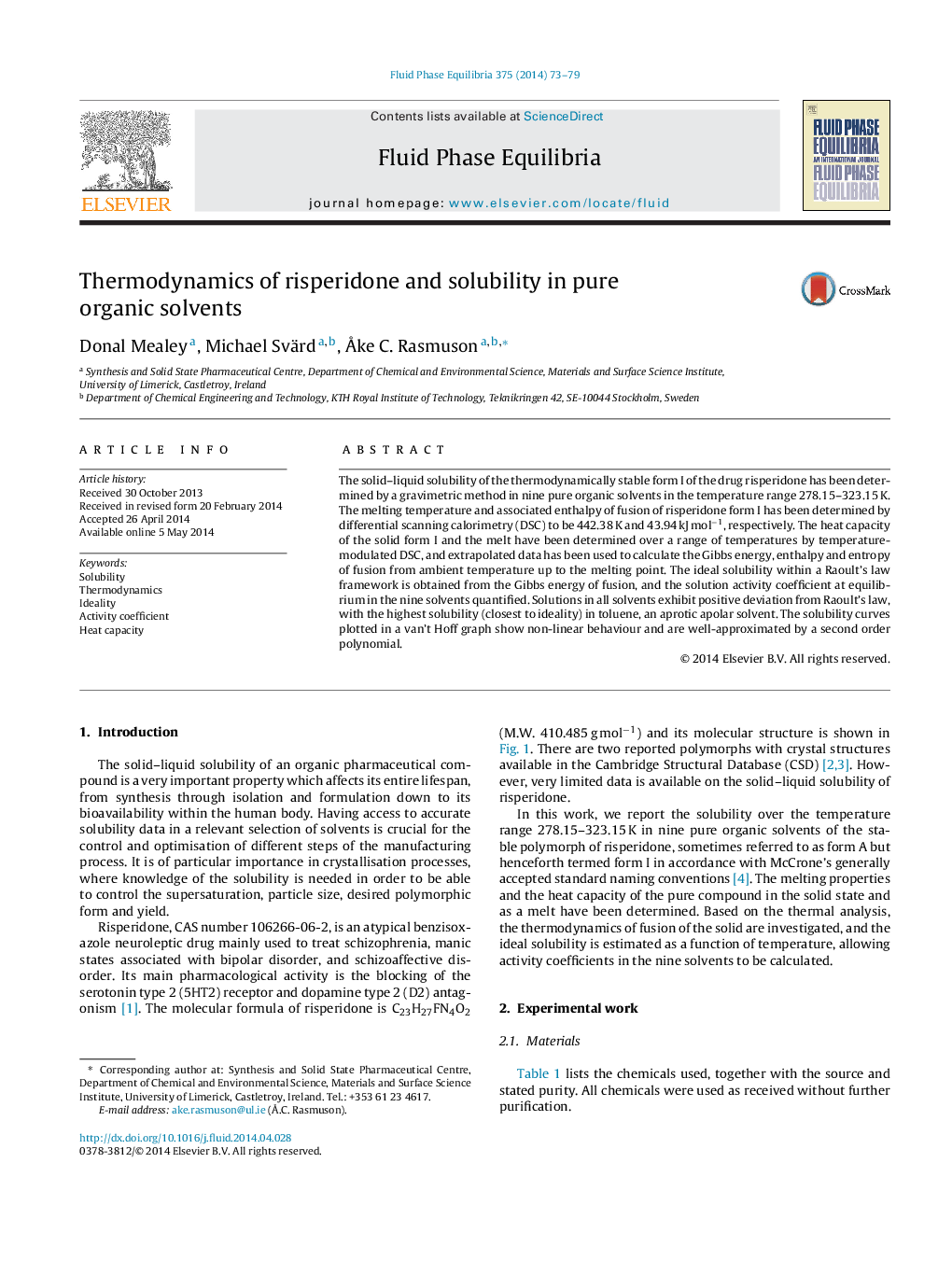| Article ID | Journal | Published Year | Pages | File Type |
|---|---|---|---|---|
| 202338 | Fluid Phase Equilibria | 2014 | 7 Pages |
•The solubility of risperidone form I was measured in nine organic solvents.•Melting data and Cp of the solid and the melt were measured with DSC.•Fusion thermodynamics and ideal solubility were calculated using experimental data.•Activity coefficients in all solvents reveal a positive deviation from Raoult's law.•van’t Hoff solubility curves show non-linear behaviour.
The solid–liquid solubility of the thermodynamically stable form I of the drug risperidone has been determined by a gravimetric method in nine pure organic solvents in the temperature range 278.15–323.15 K. The melting temperature and associated enthalpy of fusion of risperidone form I has been determined by differential scanning calorimetry (DSC) to be 442.38 K and 43.94 kJ mol−1, respectively. The heat capacity of the solid form I and the melt have been determined over a range of temperatures by temperature-modulated DSC, and extrapolated data has been used to calculate the Gibbs energy, enthalpy and entropy of fusion from ambient temperature up to the melting point. The ideal solubility within a Raoult's law framework is obtained from the Gibbs energy of fusion, and the solution activity coefficient at equilibrium in the nine solvents quantified. Solutions in all solvents exhibit positive deviation from Raoult's law, with the highest solubility (closest to ideality) in toluene, an aprotic apolar solvent. The solubility curves plotted in a van’t Hoff graph show non-linear behaviour and are well-approximated by a second order polynomial.
Graphical abstractFigure optionsDownload full-size imageDownload as PowerPoint slide
